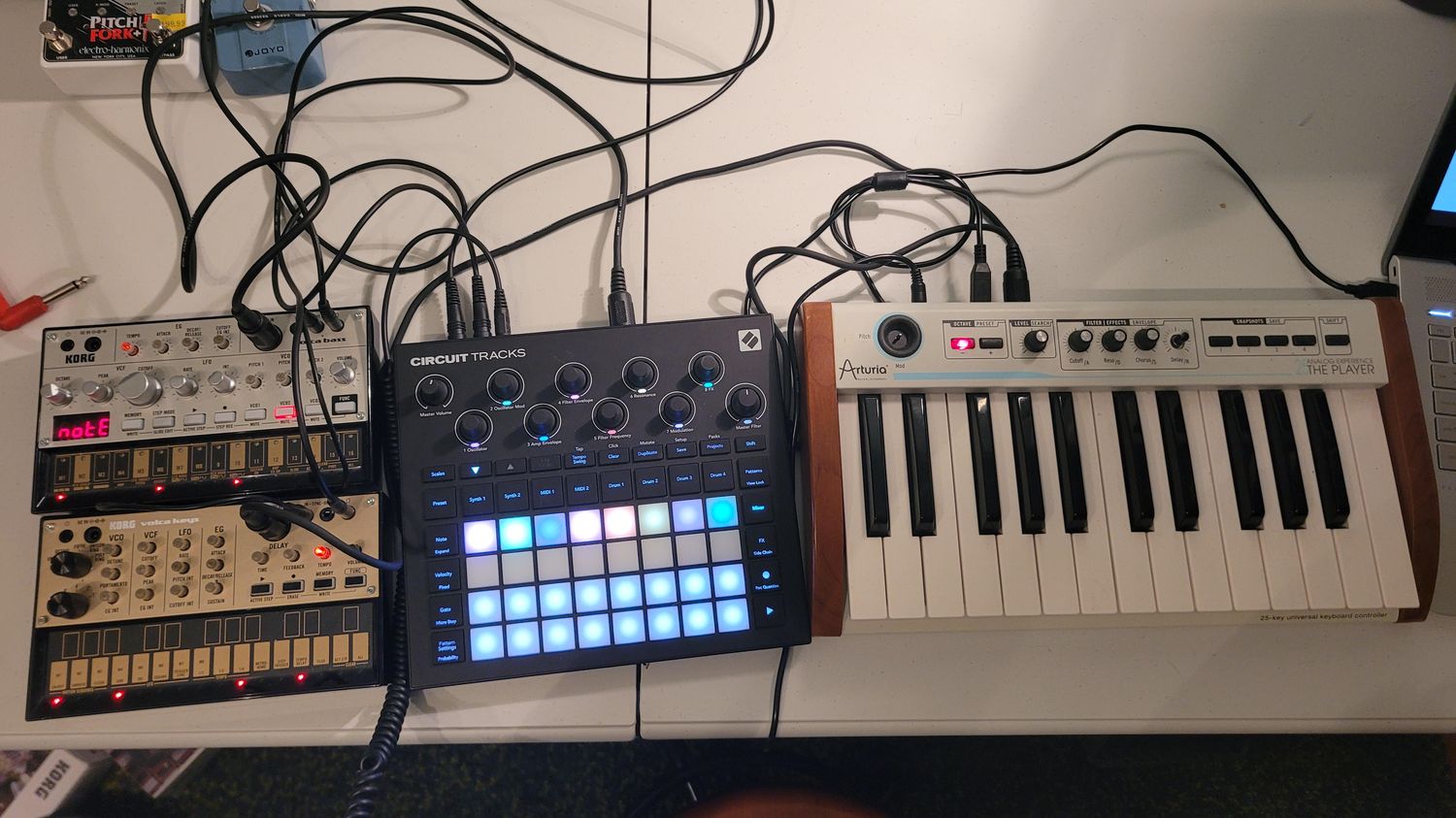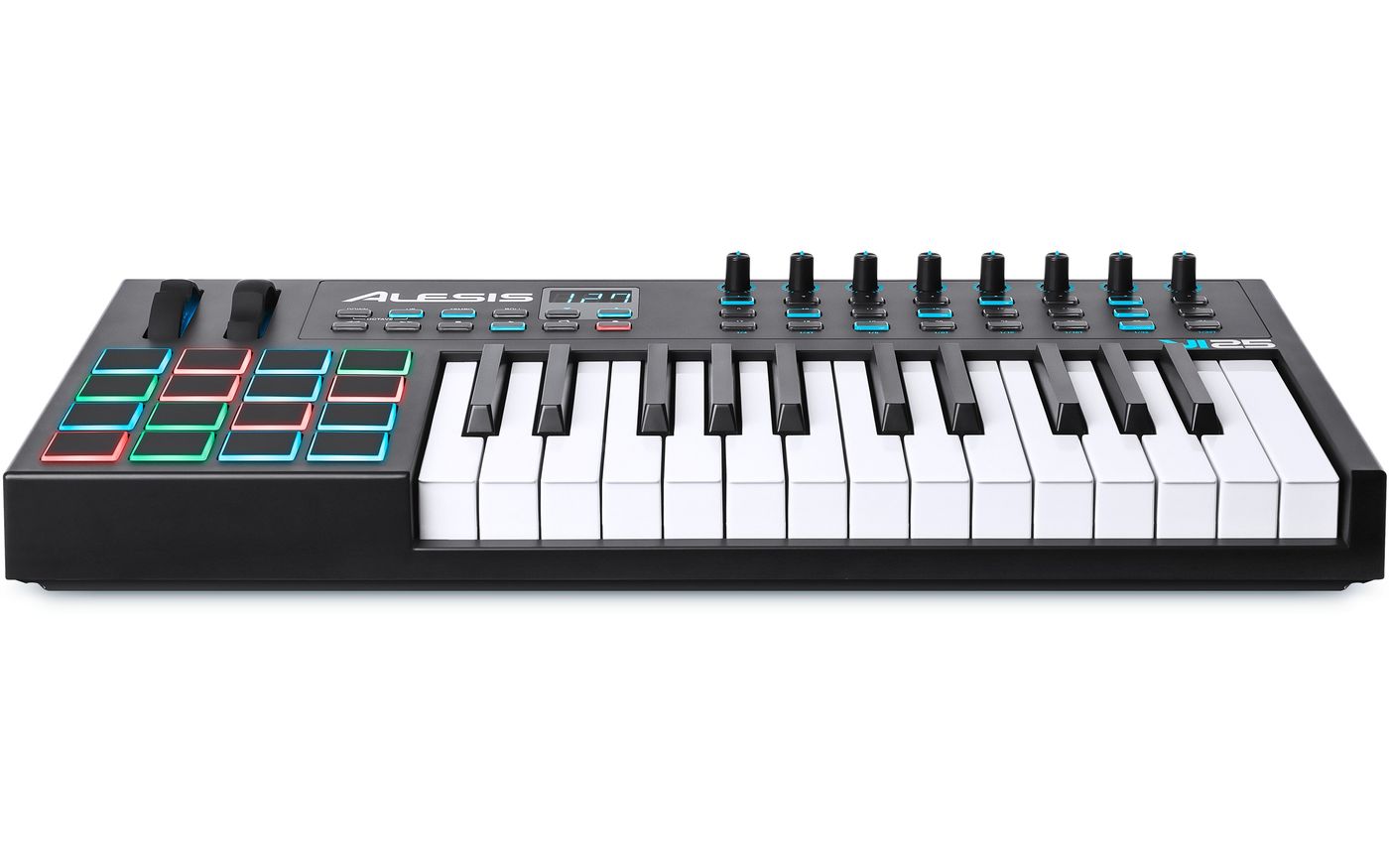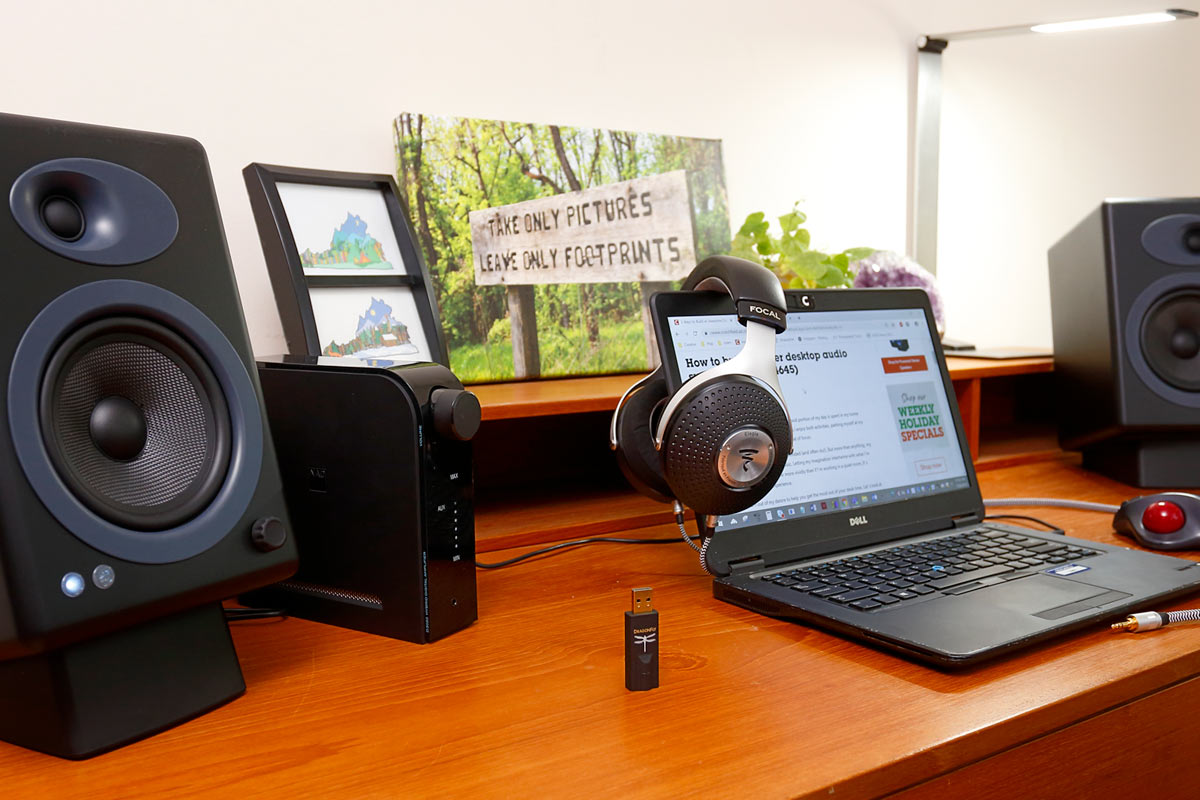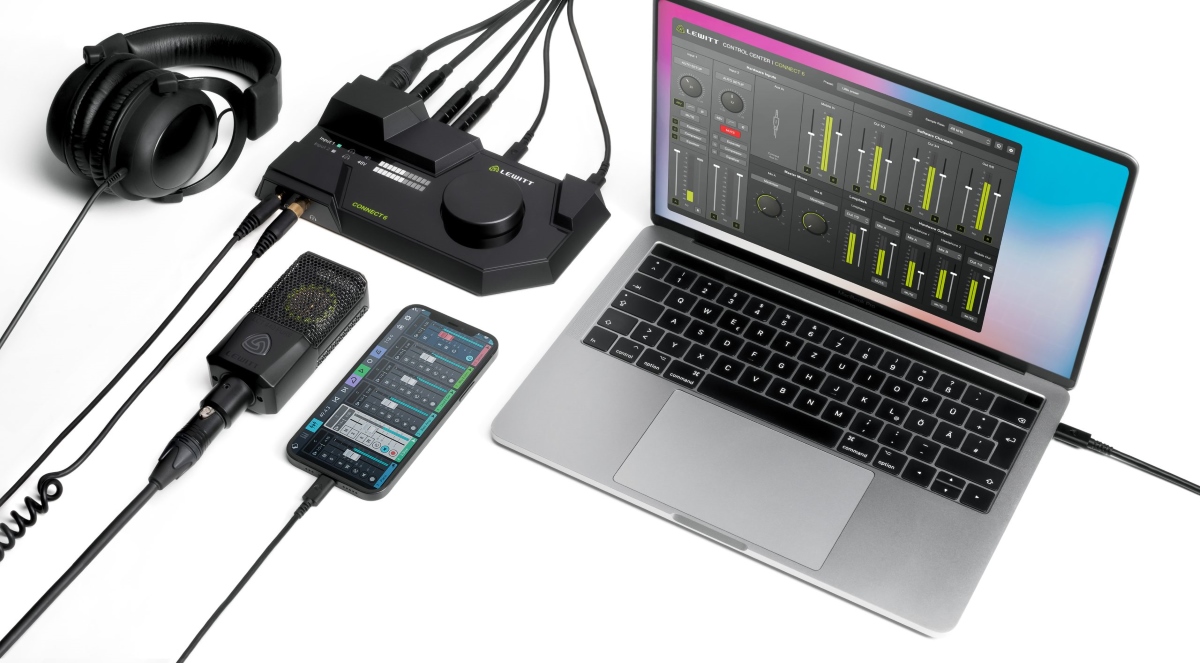Home>Production & Technology>MIDI>How To Connect Multiple USB MIDI Controllers To Computer


MIDI
How To Connect Multiple USB MIDI Controllers To Computer
Modified: February 22, 2024
Learn how to easily connect and use multiple USB MIDI controllers with your computer. Follow our step-by-step guide for seamless MIDI integration.
(Many of the links in this article redirect to a specific reviewed product. Your purchase of these products through affiliate links helps to generate commission for AudioLover.com, at no extra cost. Learn more)
Table of Contents
Introduction
In the realm of music production and performance, MIDI (Musical Instrument Digital Interface) controllers serve as indispensable tools for musicians, producers, and DJs alike. These versatile devices enable users to manipulate sound, trigger samples, and control various parameters within music software. Among the myriad of MIDI controllers available, USB MIDI controllers have gained widespread popularity due to their plug-and-play functionality and seamless connectivity with computers.
In this comprehensive guide, we will delve into the intricacies of connecting multiple USB MIDI controllers to a computer. Whether you're a seasoned music producer seeking to expand your studio setup or an aspiring DJ looking to unleash your creativity, understanding the process of integrating multiple USB MIDI controllers is paramount. By the end of this article, you'll be well-equipped with the knowledge and confidence to effortlessly harness the power of multiple MIDI controllers in your music-making endeavors.
Let's embark on a journey to demystify the world of USB MIDI controllers and unlock the potential of your musical creativity. Whether you're a solo artist, a band member, or a live performer, the ability to seamlessly connect and configure multiple USB MIDI controllers will undoubtedly elevate your musical expression to new heights. So, without further ado, let's dive into the fascinating realm of USB MIDI controllers and explore the art of connecting them to your computer.
Understanding USB MIDI Controllers
USB MIDI controllers are electronic devices that utilize the MIDI protocol to facilitate communication between musical instruments, computers, and music production software. These controllers come in various forms, including keyboards, drum pads, DJ controllers, and more, each designed to provide tactile control over different aspects of music creation and performance.
One of the defining features of USB MIDI controllers is their ability to connect directly to a computer via USB, eliminating the need for additional MIDI interfaces or cables. This plug-and-play functionality simplifies the setup process and allows for seamless integration with a wide range of music production software.
USB MIDI controllers typically feature a combination of keys, pads, knobs, faders, and buttons, each serving a specific purpose in manipulating sound and triggering musical elements. The keys on MIDI keyboards, for instance, emulate the functionality of a traditional piano, providing a means to play melodies and chords. Drum pads, on the other hand, enable users to trigger percussive sounds and samples, making them essential for beat production and live performance.
In addition to their physical controls, USB MIDI controllers often incorporate velocity sensitivity, aftertouch, and other expressive features that allow musicians to infuse their performances with nuance and emotion. This level of expressiveness adds a human touch to electronic music production, bridging the gap between traditional instrumentation and digital technology.
Furthermore, many USB MIDI controllers offer customizable mapping options, allowing users to assign specific functions to different controls based on their workflow and preferences. This flexibility empowers musicians to tailor their controllers to suit their unique creative processes, enhancing efficiency and creativity in music production and performance.
Overall, USB MIDI controllers serve as versatile tools that empower musicians, producers, and DJs to interact with music in a tangible and expressive manner. Their seamless integration with computers and music software, coupled with a diverse range of physical controls and expressive features, makes them essential components of modern music-making setups.
Understanding the capabilities and nuances of USB MIDI controllers lays the foundation for effectively harnessing their potential in music production and performance. With this knowledge in hand, let's proceed to explore the process of connecting multiple USB MIDI controllers to a computer, unlocking a world of creative possibilities.
Connecting USB MIDI Controllers to Computer
Connecting USB MIDI controllers to a computer is a straightforward process that begins with establishing a physical connection and configuring the necessary settings within the music production software. Here's a step-by-step guide to seamlessly integrate USB MIDI controllers into your computer-based music setup:
-
Physical Connection: Start by connecting each USB MIDI controller to an available USB port on your computer using standard USB cables. Most modern computers feature multiple USB ports, allowing you to connect several controllers simultaneously. As you plug in each controller, ensure that the respective power source, if required, is also connected to provide sufficient power to the devices.
-
Recognition and Installation: Upon connecting the USB MIDI controllers, your computer's operating system should recognize the devices and automatically install the necessary drivers. In most cases, USB MIDI controllers are designed to be plug-and-play, meaning they can be used immediately without the need for manual driver installation. However, it's advisable to check for any specific driver requirements by referring to the manufacturer's documentation or website.
-
Software Configuration: Launch your preferred music production software and navigate to the settings or preferences menu. Look for the MIDI or controller setup section, where you can configure the connected USB MIDI controllers. In this section, you should be able to identify and assign each controller to specific functions within the software, such as controlling virtual instruments, triggering samples, or adjusting mixer parameters.
-
MIDI Mapping: Many music production software applications offer MIDI mapping functionality, allowing you to customize the behavior of each control on your USB MIDI controllers. This feature enables you to assign specific functions, parameters, and commands to the various knobs, faders, buttons, and pads on your controllers. By mapping the controllers to your preferred settings, you can tailor their functionality to align with your creative workflow and performance requirements.
-
Testing and Calibration: After configuring the MIDI settings, it's essential to test each USB MIDI controller to ensure proper functionality and responsiveness within the music software. Play notes on MIDI keyboards, trigger samples on drum pads, and manipulate virtual instrument parameters using the knobs and faders to verify that each controller is communicating effectively with the software. Additionally, calibrate the controllers if necessary to optimize their performance and responsiveness.
By following these steps, you can seamlessly connect and integrate multiple USB MIDI controllers into your computer-based music production environment. This process empowers you to leverage the diverse capabilities of each controller, unlocking a world of creative expression and control within your music projects.
With the USB MIDI controllers successfully connected to your computer, the next step is to explore the setup and configuration of multiple controllers, allowing you to harness their combined potential in music production and performance.
Setting Up Multiple USB MIDI Controllers
Once you have successfully connected your USB MIDI controllers to your computer, the next phase involves setting up and configuring multiple controllers to work in harmony within your music production environment. This process enables you to harness the collective power of multiple controllers, expanding your creative possibilities and enhancing your control over various aspects of music creation and performance.
1. Identifying Each Controller
Begin by identifying and differentiating each USB MIDI controller within your music production software. Most software applications provide a dedicated section for managing MIDI devices, allowing you to view and assign specific controllers to individual tracks, instruments, or functions. By clearly labeling and organizing each controller within the software, you can streamline your workflow and avoid confusion when accessing and controlling different elements of your music projects.
2. Assigning Unique Functions
Each USB MIDI controller brings a distinct set of controls and capabilities to the table. Whether it's the keys on a MIDI keyboard, the pads on a drum controller, or the knobs and faders on a MIDI mixer, each controller offers unique ways to interact with your music software. Take advantage of this diversity by assigning specific functions to each controller based on its strengths and intended use. For example, you can designate one MIDI keyboard for playing melodies and chords, while another controller focuses on triggering drum samples and manipulating effects. This tailored approach maximizes the efficiency and creative potential of each controller within your setup.
3. Creating Custom Control Maps
Many music production software applications feature the ability to create custom control maps for MIDI controllers. This functionality allows you to define and save specific configurations for each controller, including the assignments of knobs, faders, buttons, and pads to various parameters within the software. By crafting custom control maps for each USB MIDI controller, you can establish intuitive and personalized control schemes that align with your musical preferences and production workflow. Whether it's shaping synth sounds, adjusting mixer levels, or launching clips, custom control maps empower you to mold your controllers into powerful and expressive instruments tailored to your creative vision.
4. Synchronizing Performance Modes
If your USB MIDI controllers offer performance modes, such as split keyboard functionality or multi-channel drum triggering, take the time to synchronize these modes to work cohesively within your music software. This entails configuring the software to recognize and respond to the performance modes of each controller, ensuring that they seamlessly integrate into your live performances or studio sessions. By harmonizing the performance modes across multiple controllers, you can orchestrate complex musical arrangements and dynamic performances with precision and finesse.
5. Testing and Refinement
Once you've set up and configured multiple USB MIDI controllers, it's essential to conduct thorough testing and refinement to ensure seamless operation and optimal performance. Test each controller individually and in conjunction with others to verify their responsiveness, accuracy, and compatibility with your music software. Fine-tune the control assignments, performance modes, and custom control maps as needed, refining the setup to align with your musical objectives and creative workflow. This iterative process of testing and refinement allows you to tailor the setup to your specific needs, ultimately empowering you to unleash the full potential of multiple USB MIDI controllers in your music production endeavors.
By meticulously setting up and configuring multiple USB MIDI controllers, you pave the way for a cohesive and dynamic music production environment that amplifies your creative expression and control. The harmonious integration of multiple controllers opens doors to innovative sound design, expressive performances, and immersive music production experiences, enriching your musical journey with boundless possibilities.
Troubleshooting Common Issues
Even with careful setup and configuration, it's not uncommon to encounter occasional challenges when working with multiple USB MIDI controllers. Addressing these common issues effectively can ensure a seamless and frustration-free music production experience. Here are some troubleshooting tips to overcome potential hurdles:
1. MIDI Signal Conflicts
When using multiple USB MIDI controllers, conflicts in MIDI signal transmission may arise, leading to unexpected behavior or unresponsiveness. To address this, start by checking the MIDI channel assignments for each controller within your music software. Ensure that each controller is set to transmit and receive MIDI data on unique channels, preventing signal overlap and conflicts. Additionally, verify that no two controllers are assigned to the same MIDI channel, as this can cause interference and disrupt the intended functionality.
2. Power and Connectivity Issues
Inadequate power supply or faulty USB connections can result in erratic behavior or intermittent functionality of USB MIDI controllers. To mitigate this, double-check the power sources for each controller, ensuring they are adequately powered and receiving consistent electrical supply. Moreover, inspect the USB cables and ports for any signs of damage or instability. Consider using high-quality USB cables and connecting the controllers to reliable USB ports on your computer to maintain stable power and data transmission.
3. Software Compatibility and Updates
Compatibility issues with music production software can hinder the seamless integration of multiple USB MIDI controllers. Stay proactive by regularly checking for software updates and ensuring that your music production application is compatible with the operating system and hardware configuration of your computer. Updating to the latest software version and drivers can often resolve compatibility issues, providing enhanced stability and functionality for your USB MIDI controllers.
4. Controller Mapping and Assignment Errors
Incorrect or conflicting controller mappings within your music software can lead to unexpected behavior and inefficiencies when using multiple USB MIDI controllers. Take the time to review and refine the control assignments, ensuring that each controller is mapped to the intended functions and parameters within the software. Verify that custom control maps are accurately configured and saved, avoiding overlapping assignments that may cause confusion or unintended control responses.
5. Firmware and Driver Updates
Periodically check for firmware updates and driver compatibility for your USB MIDI controllers. Manufacturers often release firmware updates to address performance issues and enhance compatibility with music software. Similarly, updating the device drivers on your computer can resolve compatibility issues and ensure optimal communication between the controllers and your music production environment. Staying informed about firmware and driver updates can preemptively address potential issues and optimize the performance of your USB MIDI controllers.
By proactively addressing these common issues and implementing the recommended troubleshooting strategies, you can maintain a robust and reliable setup for multiple USB MIDI controllers. Overcoming these challenges fosters a seamless and immersive music production experience, allowing you to focus on unleashing your creativity and musical expression without being hindered by technical obstacles.
Conclusion
In the realm of music production and performance, the integration of multiple USB MIDI controllers represents a gateway to boundless creativity and control. As we conclude our exploration of connecting and configuring these versatile devices, it's evident that the seamless amalgamation of USB MIDI controllers into a computer-based music setup empowers musicians, producers, and DJs to sculpt their sonic landscapes with precision and expressiveness.
By understanding the intricacies of USB MIDI controllers and the process of connecting them to a computer, individuals can embark on a journey of musical exploration unbounded by technical limitations. The tactile nature of MIDI keyboards, the rhythmic potential of drum pads, and the dynamic control offered by MIDI mixers converge to form a symphony of possibilities within the digital realm. Each controller becomes a conduit for artistic expression, bridging the gap between human emotion and electronic sound.
Setting up and configuring multiple USB MIDI controllers amplifies this potential, allowing users to orchestrate a symphony of control and creativity. The ability to assign unique functions, create custom control maps, and synchronize performance modes across multiple controllers fosters a cohesive and personalized music production environment. This harmonious integration transcends the realm of mere technical setup, elevating the creative process to an intuitive and immersive experience.
However, as with any technological endeavor, challenges may arise. From MIDI signal conflicts to software compatibility issues, troubleshooting common issues becomes an essential part of maintaining a robust and reliable setup. By addressing these challenges proactively, individuals can ensure a seamless and uninterrupted flow of creativity, allowing their focus to remain steadfast on the art of music-making.
In essence, the journey of connecting and configuring multiple USB MIDI controllers to a computer transcends the realm of technical setup. It embodies the convergence of technology and artistry, empowering individuals to sculpt soundscapes, ignite performances, and breathe life into their musical visions. The seamless integration of USB MIDI controllers serves as a testament to the marriage of innovation and creativity, offering a canvas upon which musical masterpieces are painted with boundless imagination.
As we bid adieu to this exploration, let the harmonious symphony of multiple USB MIDI controllers echo the boundless potential of human creativity, forever intertwined with the digital realm. Embrace the art of connection, configuration, and creation, for within this convergence lies the power to transform musical aspirations into vibrant realities.











